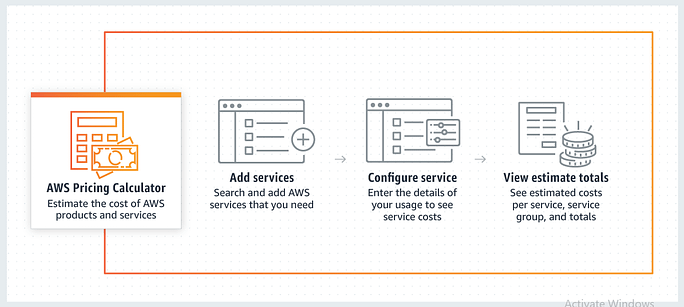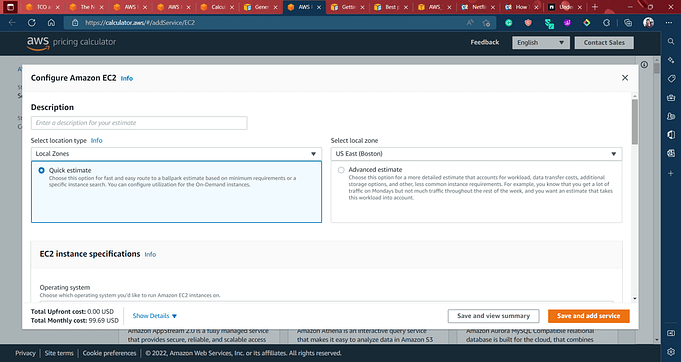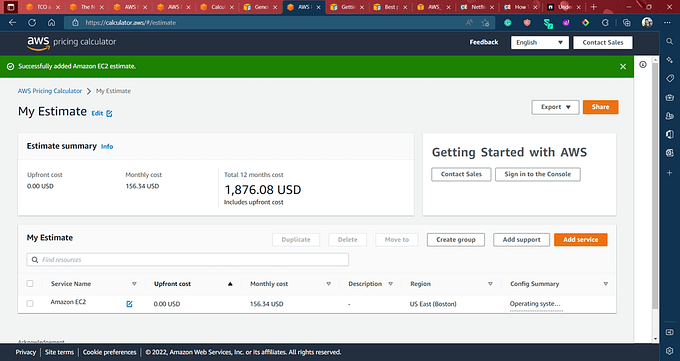For small and mid-sized businesses (SMBs), documents are the backbone of operations. Contracts, invoices, insurance claims, and loan applications hold critical information but often come buried under layers of text, handwriting, and complex formatting. Traditionally, extracting and processing this data meant hours of manual work. But with Intelligent Document Processing (IDP), that’s changing.
More than just automation, modern IDP solutions use generative AI and large language models (LLMs) to quickly extract, understand, and process information with high accuracy. This means faster workflows, fewer errors, and less manual effort.
With the IDP market projected to grow from $10.57 billion in 2025 to $66.68 billion by 2032, businesses are adopting these solutions to stay competitive. But what makes IDP so effective, and why should SMBs invest in it? Let’s take a closer look.
What is Intelligent Document Processing (IDP)?
Intelligent Document Processing (IDP) is an AI-powered technology that automates the extraction, classification, and validation of data from structured, semi-structured, and unstructured documents. It utilizes optical character recognition (OCR), natural language processing (NLP), machine learning, and large language models (LLMs) to interpret context, enhance accuracy, and minimize human intervention.
How is IDP Helpful to SMBs?
Small and mid-sized businesses (SMBs) handle hundreds of invoices daily, printed, handwritten, PDFs, or images, often relying on manual data extraction for vendor names, amounts, and due dates.
Intelligent Document Processing (IDP) automates this process by scanning invoices, extracting key details, and updating records instantly, minimizing errors and saving valuable time. Whereas, businesses looking to automate these processes often turn to Robotic Process Automation (RPA).
RPA (Robotic Process Automation) uses software bots to handle repetitive, rule-based tasks, like copying data, filling out forms, or clicking through systems, just like a human would.
In order to convert the unstructured (emails with order details, handwritten invoices, contracts, or customer support chat logs) and semi-structured data (invoices in different formats, bank statements, shipping labels, or survey responses) to usable information, IDP primarily serves as a key enabler for RPA.
In simple terms, IDP extracts and organizes data from unstructured documents. This enables RPA to seamlessly execute follow-up actions, allowing SMBs to automate entire workflows with speed and accuracy.
How Does IDP Work?

IDP follows a simple step-by-step process:
- Document Upload: Files are scanned or uploaded into a system, like Amazon S3.
- Classification: IDP sorts them into categories (e.g., invoices, legal contracts).
- Data Extraction: It pulls out key information using AI-powered tools like Amazon Textract (for text and handwriting recognition) and Amazon Comprehend (for natural language understanding), and many more.
- Data Enrichment: The extracted information is processed further, removing sensitive details, tagging relevant data, or cross-checking with existing records.
- Validation & Review: If IDP is uncertain about some data, it sends it to a human reviewer for verification.
- Integration: The final, validated data is sent to business applications for processing, storage, or analysis.
This process enables companies to manage large volumes of paperwork effortlessly, unlocking faster decision-making, cost savings, and better compliance.
What are the Top 4 Use Cases of IDP?

Every industry has its share of paper-heavy processes. Some are buried in stacks of contracts. Others are drowning in forms that never seem to end. While SMBs have embraced digital transformation, many still struggle with legacy systems, compliance requirements, and unstructured data, making manual workflows a persistent challenge.
Here are some common use cases of how Intelligent Document Processing (IDP) is making a difference across industries:
1. Healthcare
Hospitals and clinics generate mountains of paperwork every single day. From patient insurance claims to lab results, prescriptions, and discharge summaries, it’s a never-ending cycle. Manually entering this data slows down treatment, delays claim settlements, and increases the chances of human error.
With IDP, whether a small clinic or a hospital chain, paperwork can be scanned and automatically read, sorted, and organized, with no manual effort needed. For example, when a patient files an insurance claim for the treatment they received, IDP can read their documents, extract policy numbers, treatment details, and amounts in minutes.
IDP also works hand in hand with electronic medical records (EMRs), feeding structured data directly into EMR systems. This ensures faster documentation, better accuracy, and real-time access to patient information.
Here’s What You Can Expect with IDP in Healthcare:
- Claims processed in hours, not weeks: Reduce claims turnaround time from 4–6 weeks to just 24–48 hours.
- Fewer documentation errors: Boost accuracy from 75% to 99.8%, minimizing costly mistakes.
- Faster compliance checks: Cut down review time from months to just 2 weeks, helping you stay audit-ready.
- Better fraud detection: Use AI-powered alerts to catch 50% more fraudulent claims before they’re approved.
2. Insurance
Insurance companies deal with multiple claims every single day. Many of these come in the form of handwritten documents, scanned medical records, EMRs, or multi-page reports. Reading through these manually is time-consuming and often leads to missed information or delays in approvals.
IDP can automatically scan all your incoming claim documents, understand the context, extract key data like diagnosis, dates, and claim amounts, and flag anything suspicious. This speeds up the process significantly and helps detect any foul or fraud activities early.
Here’s What You Can Expect with IDP in Insurance:
- No more manual data entry: Instantly extract claim details, policyholder info, and coverage terms with high accuracy.
- Faster claim approvals: AI models evaluate claim validity, cutting approval times from 4–6 weeks to just 24–48 hours.
- Fewer disputes, less fraud: Real-time cross-checking against contracts, medical records, and past claims helps reduce errors and flag fraudulent activity.
3. Legal
Legal work involves handling large volumes of documents that require precision and attention to detail. Lawyers and paralegals often dedicate significant time to reviewing contracts, agreements, and case files to ensure accuracy and compliance.
Traditionally, these processes took weeks, and teams had to sift through hundreds of pages, flag inconsistencies, and ensure compliance. But with IDP, just a few hours.
Here’s how IDP helps with Legal work:
- Rapid Document Analysis: Scans and analyzes 300+ pages of contracts in minutes.
- Accurate Clause Extraction: Extracts key clauses, obligations, and financial risks with 99% accuracy.
- Error and Discrepancy Detection: Flags missing signatures and discrepancies automatically.
- Accelerated Legal Review: With everything verified instantly, the legal team moved straight to negotiation, saving over 80% of the usual review time.
- Automated Draft Creation: Auto-generates first drafts of legal documents using pre-set templates, reducing drafting time by up to 72%.
With IDP verifying these instantly, the legal team moved straight to negotiation, saving over 80% of the usual review time. For legal teams at small and mid-sized firms, this means less grunt work, more strategy. For clients? Faster deals, lower costs, and airtight compliance.
4. Logistics
Small and medium-sized logistics companies handle a vast array of documents like shipping manifests, bills of lading, invoices, and customs declarations. Managing these manually can lead to delays, errors, and increased operational costs.
By integrating IDP, logistics businesses can reduce manual data entry, expedite shipment processing, and improve compliance with regulatory requirements.
Here’s how IDP helps Small or Medium-sized Logistics businesses:
- Faster shipment processing: IDP can reduce document processing times by 50–70%, accelerating shipment handling and delivery schedules.
- Improved accuracy in documentation: Automation minimizes manual data entry errors, enhancing data quality and reducing discrepancies.
- Enhanced compliance: IDP ensures accurate data capture and storage, aiding adherence to regulatory requirements and reducing compliance risks.
- Cost savings: By automating document processing, businesses can achieve average savings of 25–40%, lowering operational expenses.
Conclusion
For SMBs drowning in paperwork, IDP isn’t just a convenience. It’s a competitive edge. By eliminating bottlenecks, reducing errors, and speeding up workflows, it transforms how organizations handle information.
Cloudtech is a platform that provides tailored cloud solutions that optimize IDP performance, ensuring seamless automation, secure data processing, and reduced operational costs. With expertise in serverless computing, data modernization, and resilient cloud architectures, Cloudtech helps SMBs process documents faster, improve security, and cut costs.
Cloudtech delivers custom-built cloud solutions that drive real business impact. Explore how Cloudtech can modernize your cloud environment and power intelligent automation at scale.
FAQs
- Is IDP only for large enterprises?
Not at all. Intelligent Document Processing (IDP) is equally valuable for small and medium businesses. In fact, SMBs benefit even more by reducing manual work, saving time, and lowering operational costs with limited teams. - How does IDP actually help my small team?
IDP automates repetitive tasks like data entry, document sorting, and verification. This helps your small team focus on more meaningful work such as sales, support, or operations. It also improves accuracy and speeds up business processes. - Is IDP secure enough for sensitive business documents?
Yes. Most IDP solutions use strong encryption, access controls, and secure storage to protect your documents. Many are also compliant with data protection regulations to keep your information safe.
- How is Intelligent Document Processing (IDP) different from Robotic Process Automation (RPA)?
Robotic Process Automation (RPA) handles simple, rule-based tasks like copying, pasting, or clicking through screens. However, it cannot understand unstructured or messy data. Intelligent Document Processing (IDP) steps in to read, understand, and pull out useful information from documents. It then passes the clean data to RPA so it can do its job. In short, IDP handles the thinking, and RPA does the doing.

Get started on your cloud modernization journey today!
Let Cloudtech build a modern AWS infrastructure that’s right for your business.



%2520dark.jpeg)


